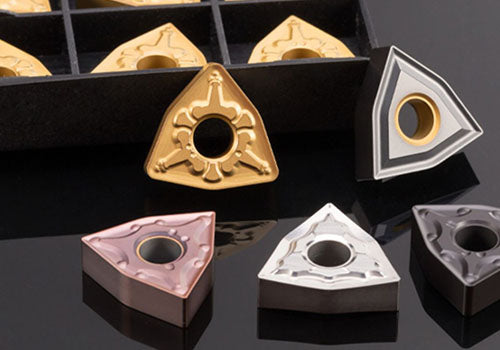
The Basics of CNC Inserts: What Are They and How Do They Work?
Share
Introduction
Computer Numerical Control (CNC) machines have revolutionized the manufacturing industry, making the production of complex parts possible with great precision and efficiency. One of the key components of a CNC machine is the insert, which is responsible for cutting and shaping materials into the desired form. In this blog post, we will explore the basics of CNC inserts, including what they are and how they work.
What Are CNC Inserts?
CNC inserts are replaceable cutting tools mounted onto a CNC machine's cutting head. They are made of hard materials such as carbide, ceramic, or diamond, and are designed to withstand the high temperatures and pressures generated during the cutting process. CNC inserts come in a variety of shapes and sizes, each with a specific purpose in mind. Common types of CNC inserts include turning inserts, milling inserts, drilling inserts, and grooving inserts.
Turning Inserts
Turning inserts are used to cut cylindrical parts, such as shafts and pipes. They come in a range of shapes and sizes, including square, triangular, and round. The choice of insert will depend on the material being cut and the desired finish.
Milling Inserts
Milling inserts are used to cut flat or curved surfaces, such as those found on gears or molds. They come in various shapes, including square, round, and triangular, and are designed to remove material quickly and efficiently.
Drilling Inserts
Drilling inserts are used to make holes in materials, such as metal and wood. They come in a range of sizes and shapes, including twist drills, spade drills, and indexable drills.
Grooving Inserts
Grooving inserts are used to cut grooves or slots in materials, such as metal and plastic. They come in a range of sizes and shapes, including square, triangular, and round.
How Do CNC Inserts Work?
CNC inserts work by removing material from a workpiece through a process called cutting. The cutting head of a CNC machine moves along a predetermined path, guided by a computer program specifying the cut’s shape and depth. As the cutting head moves, the CNC insert spins at high speeds and makes contact with the workpiece, shaving off thin layers of material with each pass. The shape and orientation of the CNC insert determine the shape of the cut and the type of material that can be cut.
The Benefits of CNC Inserts
Using CNC inserts offers several benefits over traditional cutting tools. First, because they are replaceable, CNC inserts can be changed out quickly and easily, reducing downtime and increasing productivity. Second, CNC inserts are more precise than traditional cutting tools, allowing for tighter tolerances and finer finishes. Finally, CNC inserts are more cost-effective in the long run, as they can be re-sharpened and reused multiple times before needing to be replaced.
Conclusion
CNC inserts are a critical component of CNC machines, allowing for the precise and efficient cutting of materials. By understanding what CNC inserts are and how they work, manufacturers can make informed decisions about which types of inserts to use for specific applications. With the right CNC inserts, manufacturers can produce high-quality parts faster and more efficiently than ever.
As technology continues to advance, CNC machines will only become more sophisticated, and the use of CNC inserts will become even more important. Therefore, it is essential for manufacturers to stay up-to-date with the latest developments in CNC technology and to invest in the tools and equipment that will help them stay competitive in today's fast-paced manufacturing industry.




